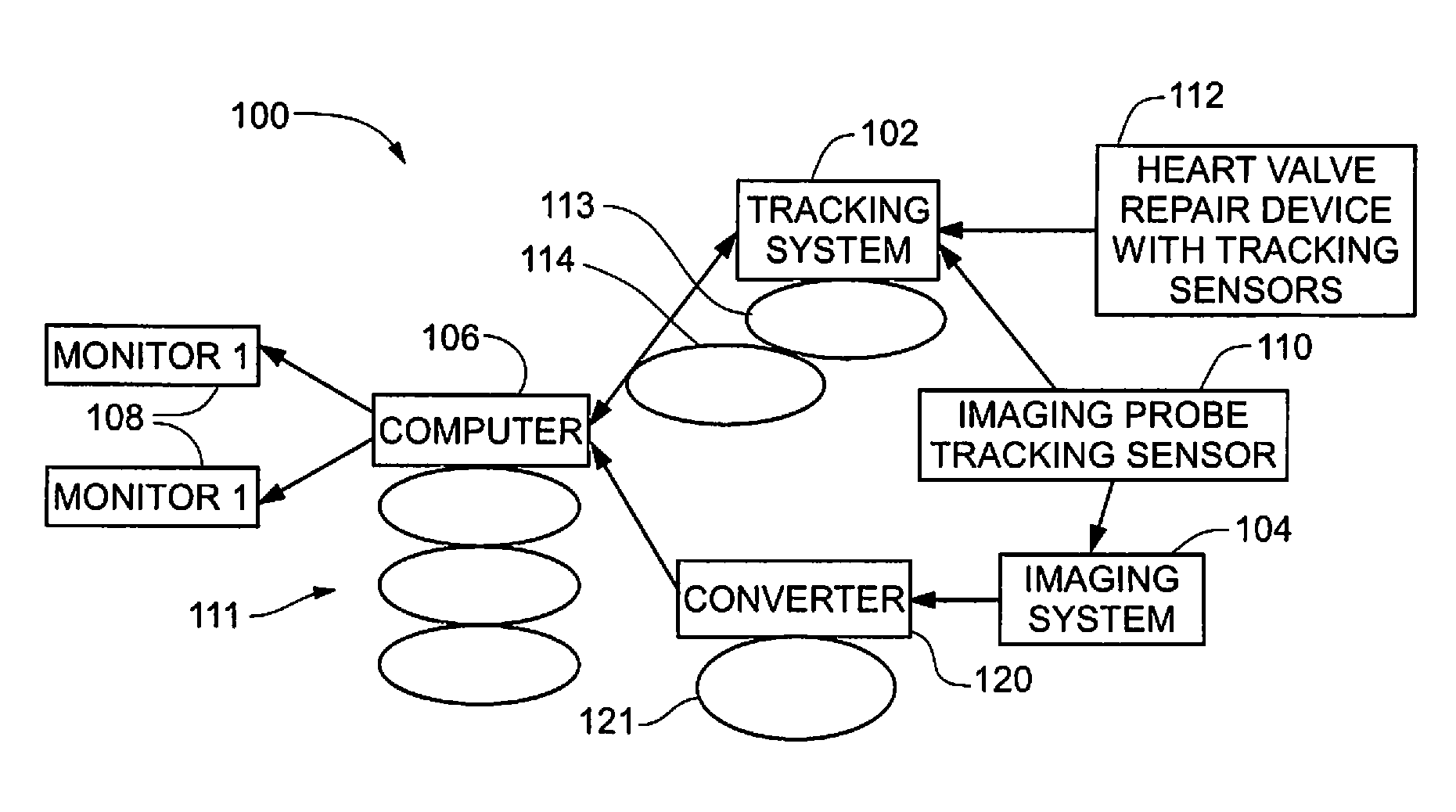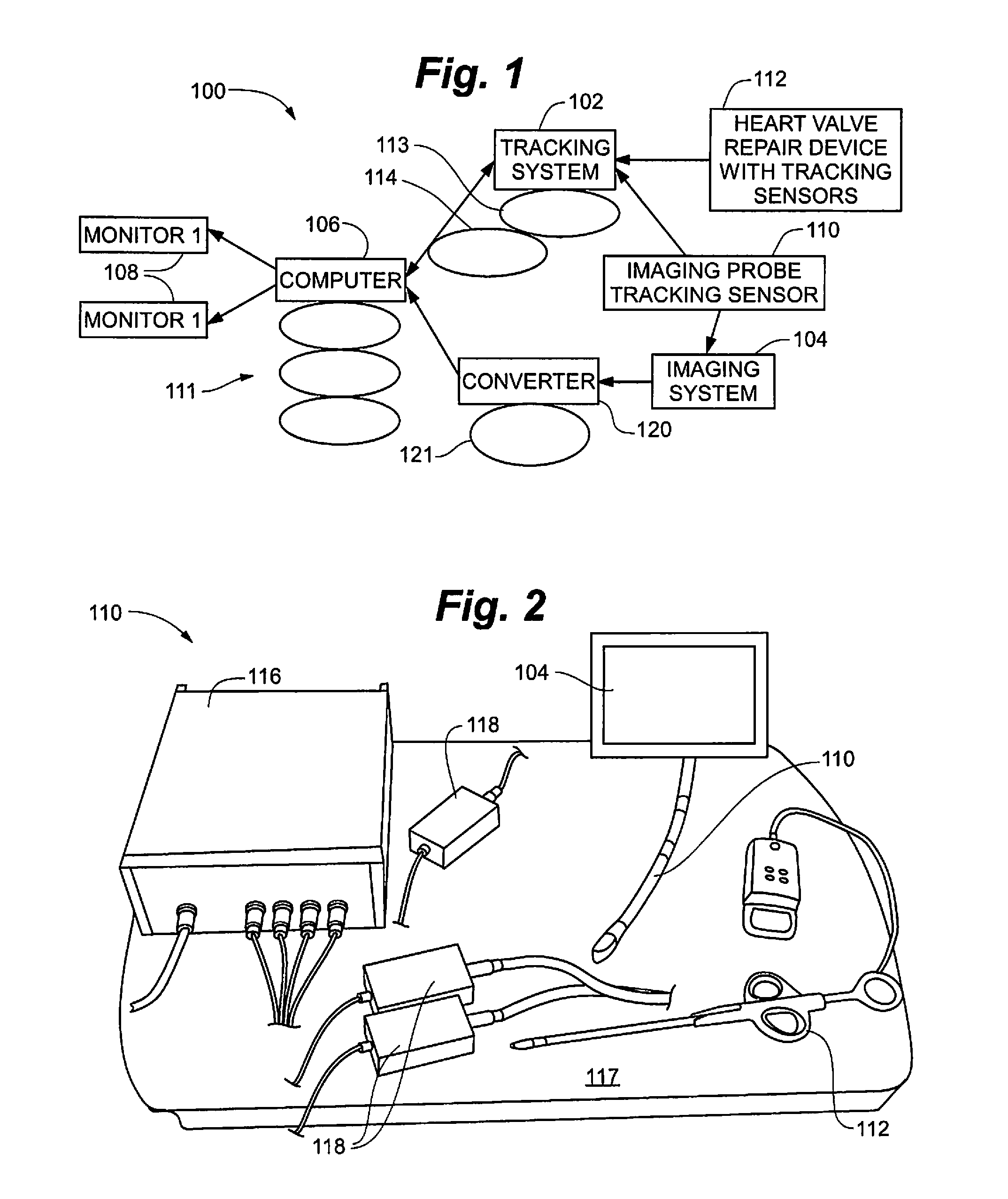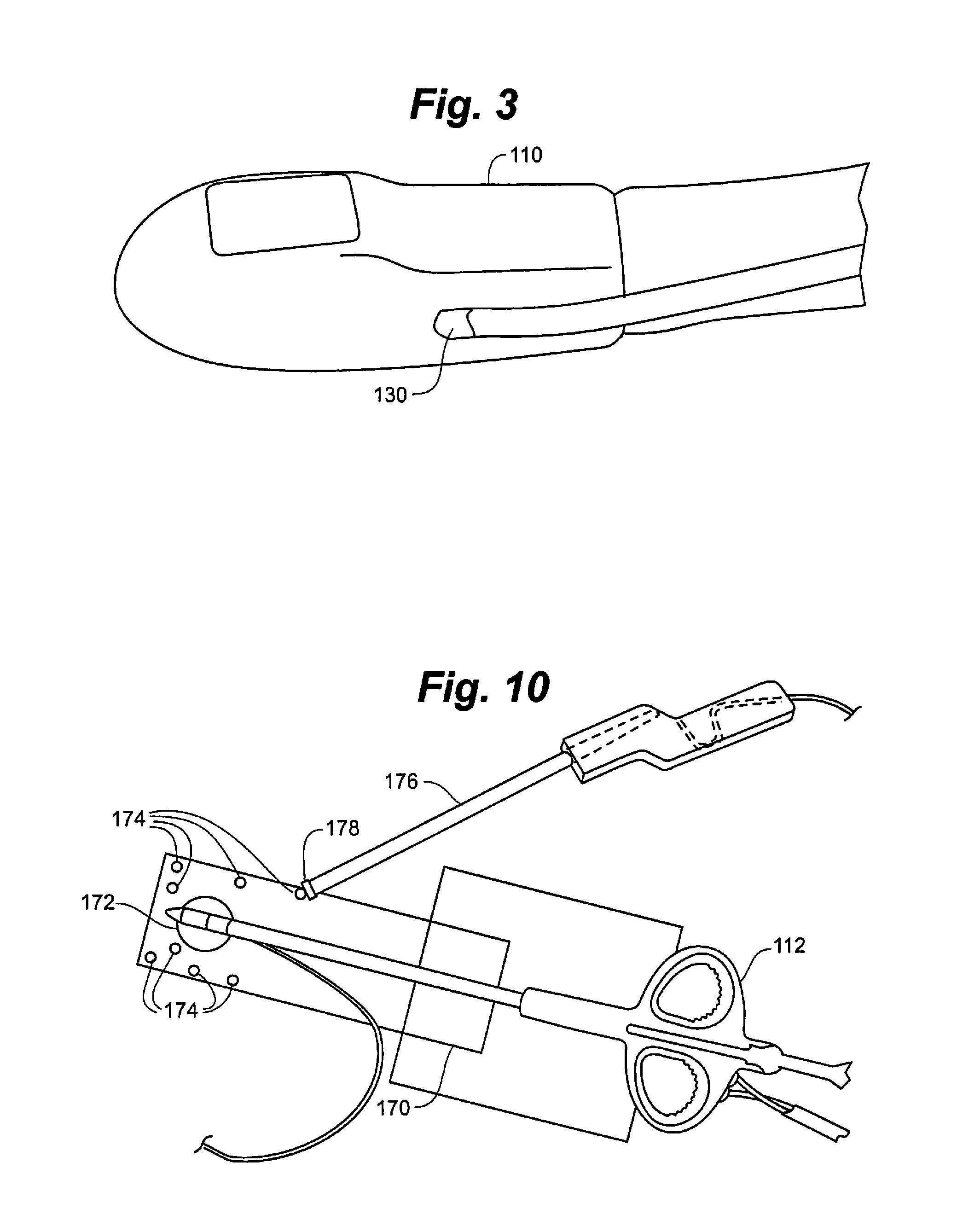Surgical navigation for repair of heart valve leaflets
a heart valve leaflet and navigation system technology, applied in the field of minimally invasive heart valve leaflet repair, can solve the problems of preventing its natural closure, shortening affecting the overall navigation process, etc., and achieve the effect of improving the overall navigation process
- Summary
- Abstract
- Description
- Claims
- Application Information
AI Technical Summary
Benefits of technology
Problems solved by technology
Method used
Image
Examples
Embodiment Construction
[0036]In the following detailed description of the present invention, numerous specific details are set forth in order to provide a thorough understanding of the present invention. However, one skilled in the art will recognize that various embodiments of the present invention may be practiced without these specific details. In other instances, well-known methods, procedures, and components have not been described in detail so as to not unnecessarily obscure aspects of the present invention.
[0037]According to an embodiment of the present invention, a visualization environment uses tracking technology to locate both a heart valve repair tool and a transesophageal echocardiogram (TEE) probe in 3D space, making it possible to represent real-time echo images with virtual geometric models of both devices and interactively defined anatomy within a common coordinate system. Exemplary repair tools can include those disclosed in U.S. Patent Publication Nos. 2008 / 0188873, 2010 / 0174297, 2009 / 0...
PUM
 Login to View More
Login to View More Abstract
Description
Claims
Application Information
 Login to View More
Login to View More - R&D
- Intellectual Property
- Life Sciences
- Materials
- Tech Scout
- Unparalleled Data Quality
- Higher Quality Content
- 60% Fewer Hallucinations
Browse by: Latest US Patents, China's latest patents, Technical Efficacy Thesaurus, Application Domain, Technology Topic, Popular Technical Reports.
© 2025 PatSnap. All rights reserved.Legal|Privacy policy|Modern Slavery Act Transparency Statement|Sitemap|About US| Contact US: help@patsnap.com



